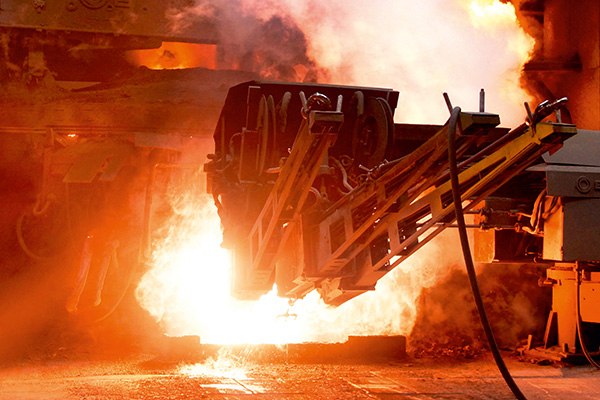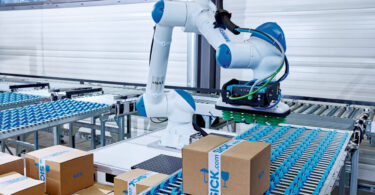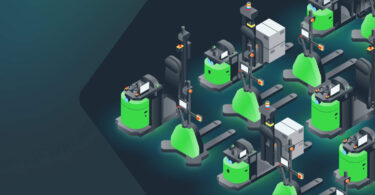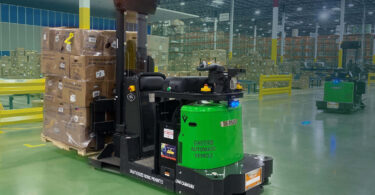SICK supplies sensor solutions for almost every possible application in the metal and steel sector, even in the world of analytical measuring. The company’s latest innovation is METPAX300, a customized analyzer system which measures exhaust gas emissions from electric arc furnaces.
The vast majority of structural steel, high-quality steels, and stainless steels manufactured in electric arc furnaces (EAF) are produced by melting down steel scrap for reuse. This process consumes less energy than producing steel via the blast furnace route. However, in both cases, the ambience is dominated by dirt, heat, vibrations, and noise. These prevailing conditions mean that it is often difficult for measuring technology to be both failsafe and precise. Yet the use of reliable measuring technology is essential in order for production to run more cost-effectively, for climate protection targets to be achieved, and to increase flexibility and safety.
The measuring tasks to be carried out at an electric arc furnace are many and varied. The reliable sensor technology from SICK is used in a whole range of applications to help report dangers and faults in good time: when scrap is being fed in, in the furnace burner itself, and even in ladle handling. Consumption levels for both oxygen and natural gas, for example, must be monitored directly at the furnace. Similarly, fuel pressure and the temperature also have to be monitored, as does the inertization of fuel and oil tanks. And, very importantly: Exhaust gas measurements have to be taken.
A systematic approach to measuring exhaust Gas
Cost-effective precision control of carbon injection, oxygen injection, and burner configuration settings relies to a high extent on the exhaust gas emissions from an electric arc furnace being analyzed accurately. The gas matrix is incredibly difficult to calculate due to the use of DRI (direct reduced iron), HBI (hot briquetted iron), and pig iron or hot metal in electric arc furnaces in addition to different grades of scrap. This varied mixture manifests itself as sticky mud and thick dust in exhaust gas. With all of this happening at an exhaust gas temperature of up to 1,700 °C, team work is the order of the day if the composition of the gas is to be identified under such conditions. The MCS300P process gas analyzer, the TRANSIC100LP laser oxygen transmitter, and the METPRO gas sampling probe for high levels of dust concentration make a winning team. Installed in a stainless steel cabinet and forming a reliable low-maintenance system, the analysis technology combines to form METPAX300, the new customized analyzer system by SICK.
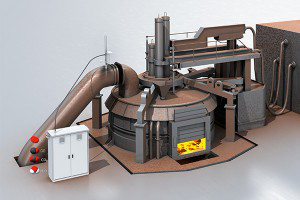 Detecting CO, CO2, H2O, O2, METPAX300 accurately analyzes the composition of the exhaust gas. The water-cooled METPRO probe takes exhaust gas from the exhaust gas line directly after the electric arc furnace. A portion of the exhaust gas flows through the innovative cross-flow filter, which has been optimized by SICK specifically for this application. Freed of dust, the gas then flows through a heated measuring gas line to the MCS300P process gas analyzer and on to the TRANSIC100LP for oxygen measurement. The hot measuring technology of the MCS300P means that there are no problems with condensation while, at the same time, its ability to measure humidity means that leaks affecting water-cooled components of the EAF can also be detected. The process gas analyzer takes measurements directly of the original gas. The analyzer cabinet is designed specifically for heavy duty requirements: Vortex coolers driven by compressed air continually cool and flush its interior. The cooling air flow is introduced from the inside to the outside. Dust ingress is thus prevented, as is overheating.
Detecting CO, CO2, H2O, O2, METPAX300 accurately analyzes the composition of the exhaust gas. The water-cooled METPRO probe takes exhaust gas from the exhaust gas line directly after the electric arc furnace. A portion of the exhaust gas flows through the innovative cross-flow filter, which has been optimized by SICK specifically for this application. Freed of dust, the gas then flows through a heated measuring gas line to the MCS300P process gas analyzer and on to the TRANSIC100LP for oxygen measurement. The hot measuring technology of the MCS300P means that there are no problems with condensation while, at the same time, its ability to measure humidity means that leaks affecting water-cooled components of the EAF can also be detected. The process gas analyzer takes measurements directly of the original gas. The analyzer cabinet is designed specifically for heavy duty requirements: Vortex coolers driven by compressed air continually cool and flush its interior. The cooling air flow is introduced from the inside to the outside. Dust ingress is thus prevented, as is overheating.
METPAX300 for clarity
By analyzing exhaust gas, plant operators can draw conclusions about slag quality from the measurement of the ratio of CO to CO2 and O2. The result of the analysis provides information on the carbon content in the heat based on the measurement of the ratio of CO to CO2. It reduces energy consumption by enabling O2 injection and CO combustion in the furnace to be optimized. It also allows the burners and carbon injection lances to be fine-tuned for the injection of oxygen and carbon by setting the ratio of CH4 to O2 for the wall burners, as well as helping to avoid explosions and preventing furnaces from bursting as a result of too much CO content in the exhaust gas or water leaks.
Recognized quality
Only high-quality hardware which delivers consistent measuring quality can attempt to take on this challenge. To put this to the test, the system was put through its paces for a period of 18 months at Hellenic Halyvourgia, a steelworks in Greece. The test reports show that the METPAX300 analysis system is able to deliver both reliable measurement results and operational safety. Both criteria – reliability and operational safety – are the basis upon which processes can be optimized and precision- controlled. They are also crucial to long-term seamless operation.
More than satisfied, the customer is taking ownership of the system following successful completion of testing.


